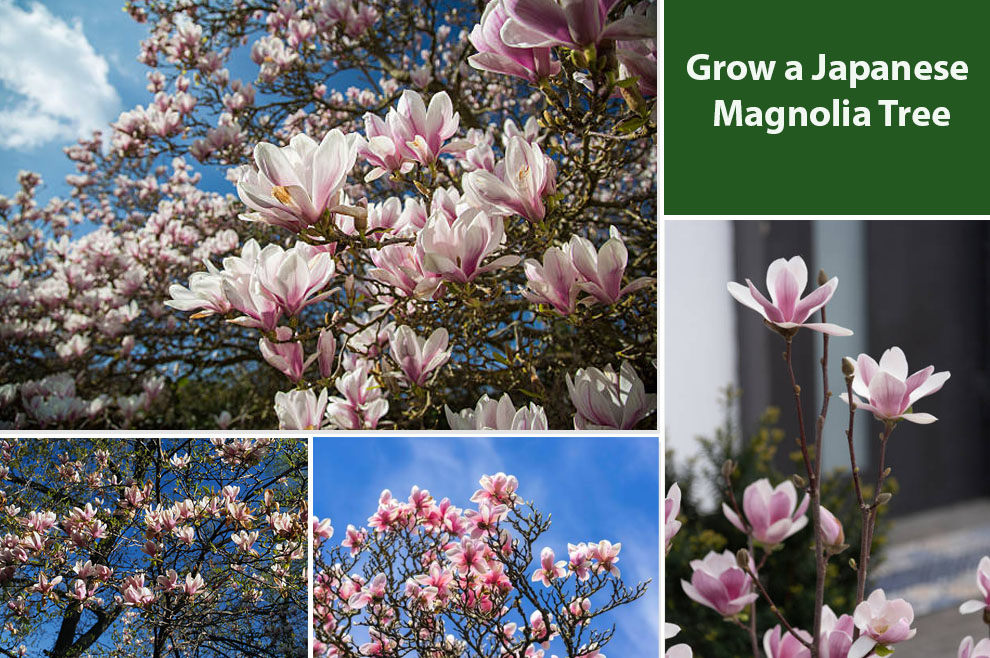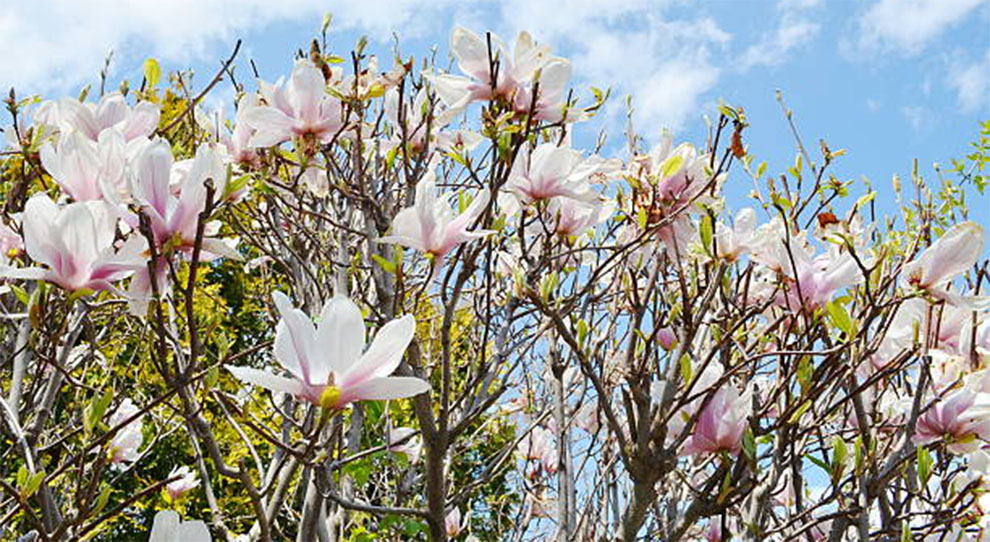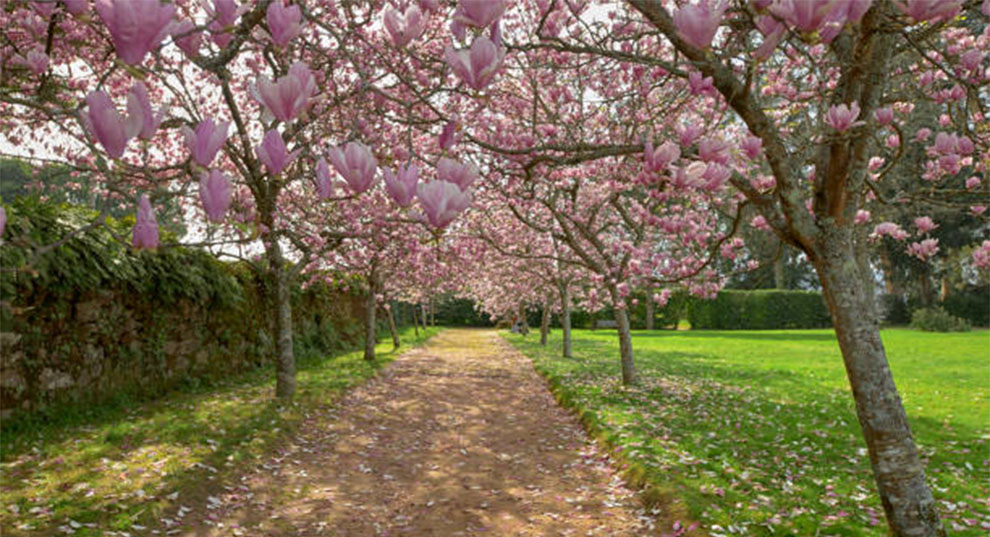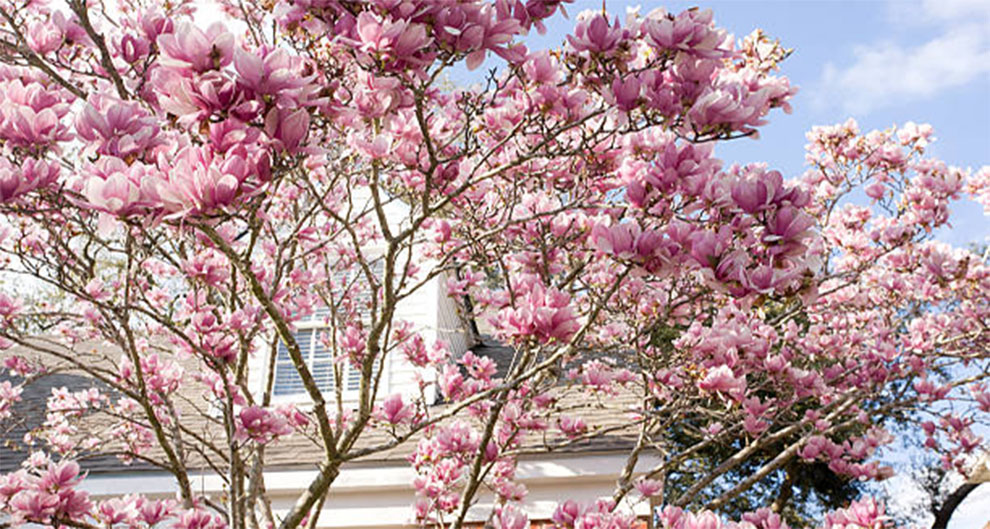Planting Japanese Magnolia Tree: How To Grow Them?

Full to partial sun and moist, well-drained soil is needed by Japanese Magnolia trees to grow well and bloom healthy. You can grow them through seeds or cuttings. Best is to buy a tiny plant and it grow with care.
One of the most noticeable trees among many homeowners is the Japanese magnolia. You can often find its showy blooms in your neighboring area. Native to Japan, it is a small-size deciduous flowering tree that goes perfectly for residential landscaping. But to enjoy its beauty, you must know how to plant a Japanese magnolia tree.
Generally, you can grow these trees with their seeds, and even cuttings like trunks. But, to grow well, it will need a moist, well-drained location receiving full sunlight to partial shade.
Make sure to leave enough room for your young magnolia to spread nicely. Never miss out on deeply watering the plant area so it can comfortably settle in the soil. Always feel free to put a thick layer of mulch on your plant to promote its stable growth.
Remember if you can grow these slow-growing trees, they can be a beautiful addition to your garden and even work as a privacy fence. This is only possible if you know the right ways to plant and care for Japanese magnolia varieties.
Planting Japanese Magnolia Trees The Right Way!

This lovely tree can be grown by planting seeds and through propagation. Many professional gardeners find it easier to grow Japanese magnolia trees using the layering method.
In this method, a new plant forming roots is layered with an old plant. As soon as it starts establishing root structure you can remove it from the parent plant and replant it in a spacious location.
Remember if you don’t place them in a large space, it might limit the roots from spreading and you will have a small growing plant.
Additionally, you can also cultivate different types of magnolia trees using seeds. Just make sure to cold store them before you plant them, which is also known as stratification. However, it might take more time to bloom when you grow a tree from seed.
Now, let’s see how to grow a Japanese magnolia tree in perfect conditions.
- Start by taking a well-cleaned heavy-weight container or clay pot. Wash out the container with fresh water. If you choose a heavy-weight container, it will prevent your plant from getting knocked over.
- Next take a mixture of compost, potting soil, and perlite in a ratio of 2:2:1. It will be useful as a fast-draining soil rich in organic nutrients. While transplanting your small plant in a container, take care to nicely cram its root ball with an organic soil mixture.
- Keep your plant in a place that receives full sunlight. Don’t forget this beautiful tree loves to grow in bright morning sunlight and light shade in the afternoon.
- Pour water into the top of the container until it runs out of the bottom. Water the tree whenever the top of the soil begins to feel dry. Do not keep the soil waterlogged, but do not let the roots dry out.
- Remember to keep your plant protected in harsh conditions like winter storms and damaging winds.
- Apply quality slow-release magnolia fertilizers on the soil surface and deep water it. Follow the usage instructions written on the package of fertilizers. Just remember to do it in the spring season, before you see new growth on your magnolia tree.
When To Plant A Japanese Magnolia Tree?

Japanese magnolia trees give a striking appearance with different varieties of ornamental flowers. But to enjoy its beauty, it is necessary to plant the tree under ideal conditions. Among the many factors that promote magnolia plant growth, the weather is a prominent factor.
If you live in any part of the northern states, it will be best to plant your magnolia in the fall. Whereas, if you are someone who resides in southern areas, make sure to plant your magnolia in the spring season.
Be wise while choosing the location to plant your deciduous Japanese magnolia tree. They prefer full sunlight to partial shade combined with well-drained and organic-rich soil.
Read more to find out about the perfect conditions for planting Japanese magnolia trees.
Ideal Growing Conditions for Japanese Magnolia Trees

These deciduous flowering trees are quite selective when it comes to growing conditions. So, make sure to provide optimum growing conditions to encourage healthy growth. Here take a look at some prominent factors that will improve your tree’s overall growth and longevity.
A. Sunlight
Japanese magnolia trees grow best flowers when they receive ideal sunlight exposure, i.e. full sunlight to partial shade. Just remember they cannot tolerate the intense and harsh winter winds. So, make sure to protect them during the winter season.
B. Soil
This beautiful flowering tree requires free-draining soil to flourish. So, be careful while choosing the soil mixture. If your soil has a clay texture, just fix it before planting your magnolia. An acidic soil mixture between pH 6 to 6.5, will work for your plant.
C. Water
Remember it is the most important element when you are thinking about how to plant a Japanese magnolia tree and maintain it. Water them twice a week for the first six months. Gradually reduce the frequency based on soil condition.
Japanese magnolia needs well-drained, moist, and organic-rich soil to quickly produce blooms. It is also smart to apply root mulch for maintaining ideal soil moisture.
D. Fertilizer
If you want to see your Japanese magnolia tree look ornamental in spring, make sure to apply light fertilizer. As recommended by experts, make sure to use a fertilizer with balanced NPK for the first three years of the tree’s life. It’s even possible to grow healthy trees with an organic-rich soil mixture.
E. Growing Zones
Being a small magnolia tree, this is a compact variety in size. It can grow only about 15 feet high. This means Japanese magnolia varieties prefer to grow in hardiness zones of 5 to 8 (USDA).
Related: Magnolia tree lifespan | Magnolia tree growth rate
FAQs
Q. Can you grow a Japanese magnolia from a cutting?
Ans. Of course, yes. There are generally many ways to grow Japanese magnolia from a cutting. You can successfully do it using bench grafting, layering technique, and clonal propagation using softwood cuttings.
In the spring season, you can propagate this species using chip budding and follow grafting during the spring months. While propagating through baby shoots, make sure to take cuttings of at least 6 to 8 inches long.
Q. Are Japanese magnolias fast-growing?
Ans. No, these majestic trees take time to grow. They have a moderate growth rate which improves with diligent magnolia care. So, as the tree establishes its roots over years, it starts gaining height. Even if you notice that your tree’s growth has stopped or stunted after a few years, it would be smart to simply change its location. Try to place your tree where it gets full light to partial shade.
Q. Do Japanese magnolias have invasive roots?
Ans. The answer to this question is both yes and no. The roots of Japanese magnolia trees do not follow a straight downward growing pattern. It rather develops and establishes horizontally to support the tree. This means that if you know how to grow a Japanese magnolia tree, and you grow it near your house walls, it can lead to foundational problems.
Its root structure might even crack open your wall into the water pipe, to satisfy its requirements. So, give sufficient growing space to the shallow and flexible root structure of Japanese magnolia trees.
Q. Do Japanese magnolias bloom twice a year?
Ans. Yes, Japanese magnolia trees enjoy remontant flowering. This means it likes to bloom again in a year. However, it might be different for some varieties that might only grow once in late summer and early spring.
